All about Bogorodskaya carving
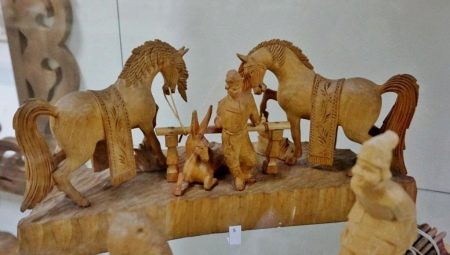
People and animals were depicted by primitive artists. The need to recreate oneself, people and animalistic heroes is always relevant for naive art - it is born among the people and is expressed in different forms. Draw, sculpt, embroider, sculpt, and finally carve out of wood: in the process of his artistic development, man has evolved in the choice of means, forms, technologies. An example of such folk art, which has become exemplary - Bogorodskaya carving.
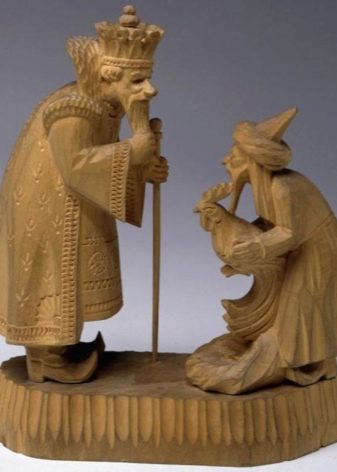
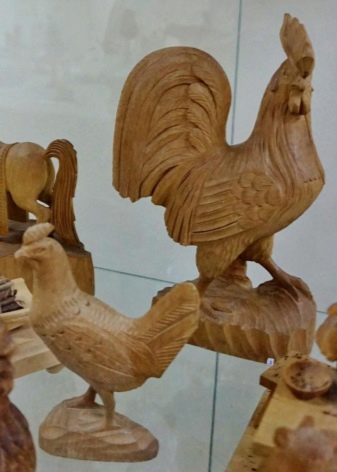
Peculiarities
The abundance of forests in Russia has become a guarantee that the wooden toy has existed here for many centuries. The pliable, warm wood developed the imagination of the craftsmen, succumbed to their creative experiments, and whole directions in carving appeared.
Traditional Bogorodskaya toys are figurines of people, animals and birds, made of unpainted linden. They depicted carvers and large compositions from peasant life.
The main "scene" of the craft is a man and a bear, she, without exaggeration, made Bogorodskaya woodcarving recognizable. But the toy has one more feature: its parts are movable, and they are brought into action by a light spring motion. At first, Bogorodskaya carving was considered a typical peasant craft, but from the second half of the 19th century, whole sculptural groups appeared in production. These plot productions were presented in realistic images of the surrounding world, people and animals, and fairy-tale heroes.
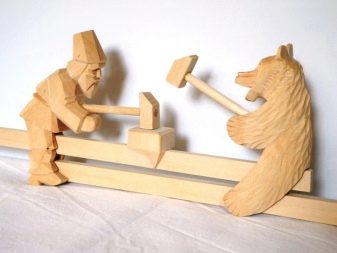

History of origin
At the end of the 16th century the village of Bogorodskoye began to belong to the Trinity-Sergiev Monastery, the peasants of the village from that time were monastic serfs.And their merit is that such a craft appeared: at that time the Bogorodsk woodcarving was laid.
The Trinity Monastery has brought together the best artisans, icon painters, wood and bone carvers.
Therefore, it would be wrong to call the Bogorodsk toy only a peasant craft, primitive and equal to many others. Even the royal children played with such crafts.
Sergiev Posad was considered the capital of Russian toys, but in general the craft was developed in many surrounding villages. But the most notable was the village of Bogorodskoye, and its name immortalized the original craft. Who was the first carver is not known for certain.
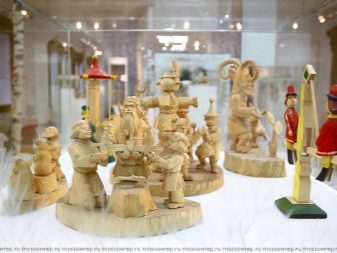
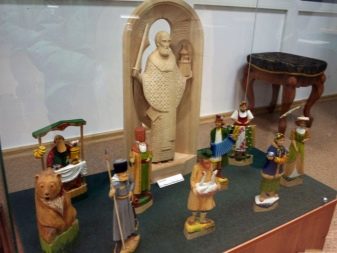
According to some sources, it was Sergius of Radonezh himself, according to others - an ordinary resident of Sergiev Posad, who sold a doll from a linden churak to a merchant who traded at the Lavra. There is an opinion that a woman, a resident of the village of Bogorodskoye, began to make dolls, and she cut out toys solely for the fun of her own children.
One way or another, the toys fell to the merchants, and from there - for sale, where they were noticed by the people. In the middle of the 19th century, the entire industry moved from the city to the village.
Carving was considered a man's business, because it required a lot of physical strength and endurance.
But the whole family worked on the final product: the older sons prepared the material itself, the younger ones were engaged in sanding the figures, doing simple manipulations. The craftsmen worked while sitting, placing a blank on their knees. There was also a family specialization: the family did not deal with more than 1-2 types of toys. There were masters "figure skaters" (they carved little men out of wood), "animal men" and "poultry houses".
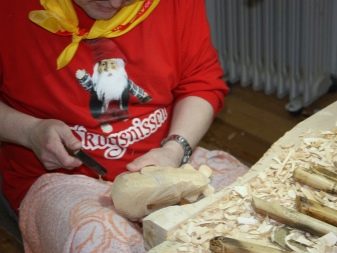
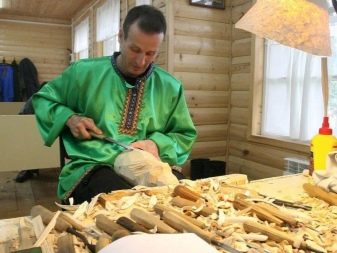
At the beginning of the last century, the artistic direction was going through hard times. In short, the cheapness of imported machine-made goods pushed the hand-made toy out of the market. And folk art could have perished, but professionals became its saviors. One of them, Nikolai Bartram, interested artisans in carving in the same folk style, however, according to the models of professionals. The toy has acquired naturalism and significant detail.

Not without a period of politicization in Bogorodsk's work: this idea was widespread at the time, all art was supposed to serve the ideals of the party. The masters tried to get away from imposed ideals in the direction of fabulous, and then - and historical themes. In the 60s, the artel became a factory of art products. And then there was a great decline: not far away they established a settlement for the builders of the pumped-storage power plant. The roots of the craft, centuries old and glorious, were withering away. It was difficult in the 90s, but the factory, having gone through divisions and renaming, still survived and functions today. It is still there, in the village of Bogorodskoye, not far from Sergiev Posad.

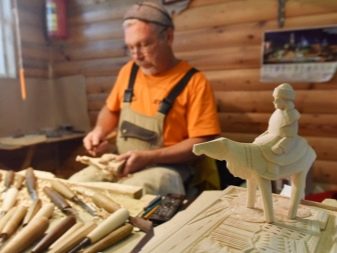
Types of wood
The material of the Bogorodsk craftsmen is soft linden wood, alder and aspen are used less often. The harvesting of trees was carried out only in winter, because at this time there is little moisture in the material.
Young trees have loose and inelastic wood; only trees 50-70 years old were suitable for carvers. When the bark is removed from the linden, the tree is dried for another 2-4 years under a special canopy.
The trunk, ready for work, was sawn, and the round pieces of logs were divided into “humpbacks” or triangular bars. How the master works with a tree:
- the specialist marks the obtained blanks according to the ready-made templates, making a pencil sketch of the template, and he cuts with a hacksaw, making notches with an ax (for outline basting);
- he removes the excess mass of wood with chisels, performs a thin part of the work with a small Bogorodsky knife "pike";
- Linden waste is sent to the manufacture of small parts or stands for sculptural groups.
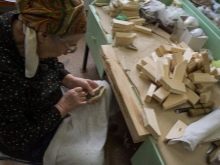
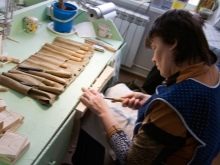
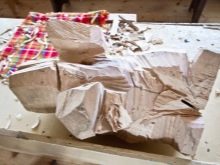
Each Bogorodsky master protects the material, each master tries to see new possibilities in artistic woodworking. Previously, masters worked without sketches at all, out of the blue, which was the reason for the new term "fly thread".
Instruments
A novice carver, getting into the workshop of a professional, is delighted with the number of tools. But almost all of them are profitable, and they start working with a basic set. And only then each master selects a new instrument for himself.
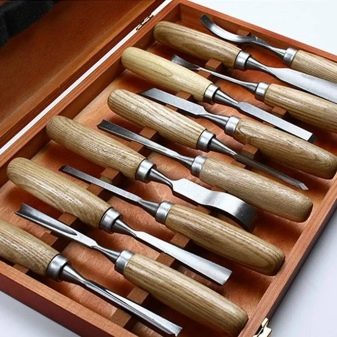
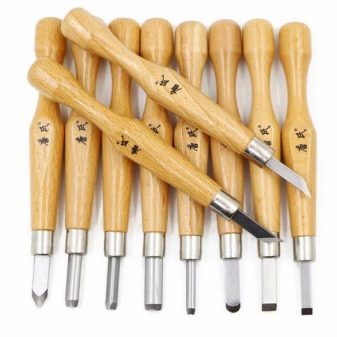
What tools are needed:
- jamb knife - has an elongated blade with a straight cutting edge;
- cutter for geometric carving - can give the blade its basic shape, and at the same time can cut small parts;
- Bogorodsky knife on wood "Tatyanka" - can perform the entire cycle of work, from rough processing to the finest details;
- chisels for carving - there are different, straight, angular, semicircular, cranberries, shtikheli;
- auxiliary tools - a plane or a rasp, a hatchet for rough workpieces, a hacksaw or an electric saw, a set of patterns, a drill, a sanding paper.
The set can be complemented by individual preferences, but the tools presented are the standard choice of carvers.
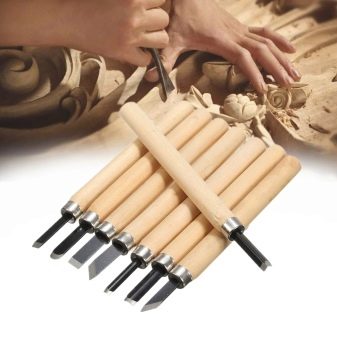
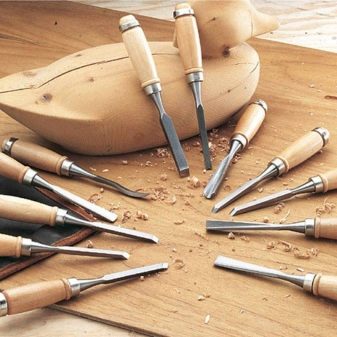
Technology and popular motives
Turning and carved toys are assembled from separate parts. Smooth details of the future sculpture are processed with sandpaper until their surface becomes velvety. Many toys today are varnished, pre-painted.
But the classic Bogorodsky bear remains monochromatic, although you can find on sale both classic carved sculptures and painted figurines.
In a sense, one can expect that the craft will soon catch a new wave of popularity: while compatriots are still enjoying the Scandi-style for the most part, new designers come and propose to replace the Scandinavian decor with Russian.
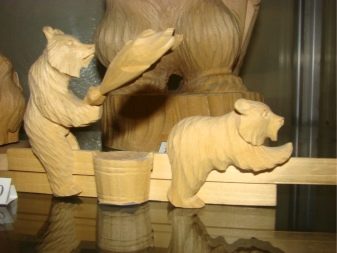
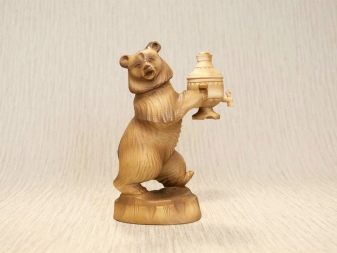
And the Bogorodsk snowmen, Santa Claus for New Year's decoration of the house are a wonderful find. So it is with the rest of the sculptures that can make the house more comfortable and beautiful. The main motives and plots of the early creations of the carvers - smart dolls (ladies and hussars), of course, peasants, as well as interesting multi-figure compositions, cute carved miniatures.
Later, the collections were replenished with ladies, gallant horsemen, dashing dancers, soldiers, fishermen, shepherdesses.
Children are very fond of animalistic compositions with which you can play, and not just admire them. Carvers take all themes from life. They also notice its beauty, and everyday life, and everyday life, and oral folk art in fairy tales and legends, and scenes symbolizing the joyful moments of the life of a Russian person. Humor and realism are calmly combined in these works, falling in love with themselves thanks to the harmony and integrity of artistic expression.
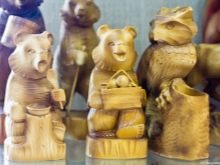
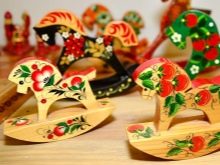
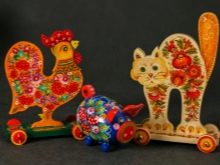
Some of the most interesting Bogorodsk toys are those that move. Button, springs, balance help a static figure to become dynamic. Even the famous sculptor Rodin spared no compliments for the Bogorodsk craftsmen, and carefully kept the toy presented to him. And this is true: to create a toy in motion, you also need to have engineering and design thinking.
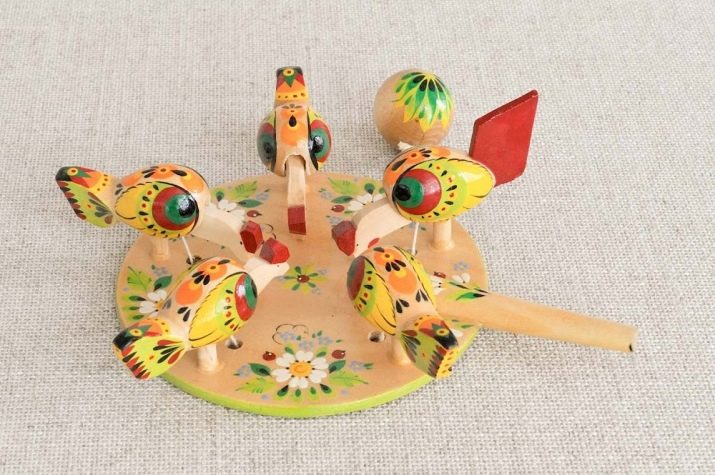
The Bogorodsky craft is part of the rich treasure of folk art. Whether he lives today in archaic forms or moves forward, thanks to the new ideas of modern masters, the main thing is that he is alive and the request for a wonderful invention of his ancestors is supported.
Watch the video for a tour of the Bogorodsk Museum of Wooden Toys.








